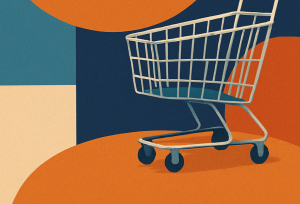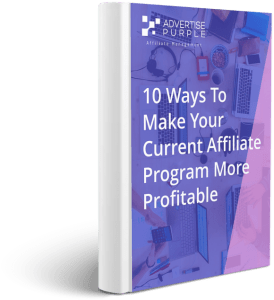
Share
It’s no secret that the subject of coupon sites tends to raise eyebrows. I mean, let’s be real, it’s kind of the affiliate space’s proverbial elephant in the room. I’ve gotta ask though, what’s with the stigma? Why are advertisers often hesitant to work with coupon sites?
While the reasons vary, there are a couple that get brought up regularly. One is that people think coupon sites could devalue the brands that they advertise. Another is that people think they could cause brands to lose money from all the discounts and sales. And the truth? There are a ton more misconceptions out there. Believe it or not, we’ve only scratched the surface. Whether they arise because people tend to associate coupon sites with being cheap or cannibalizing sales, those misunderstandings are present and rampant.
So, what do you say we address them head-on? In the name of transparency, let’s open up about coupon site myths, why they shouldn’t be believed, and why working with coupon sites can help scale your brand.
Three coupon myths and why you shouldn’t believe them:
1. Bottom of the funnel publishers are stealing other publisher sales
This one is a doozy and possibly one of the biggest, most widespread coupon site myths. What people believe with this one is that coupon sites sneak in at the last second of a customer journey and steal the sale. I can see why this might be believable, but do you want to know the truth?
82% of commissioned sales only have one publisher involved in the customer journey, according to CJ Affiliate data. Do you know what that means? It means that people aren’t hopping around from affiliate to affiliate. They’re only visiting one affiliate before checking out and completing a purchase. It also means that, because there’s a single publisher in the path-to-purchase for the majority of affiliate customer journeys, publishers usually aren’t competing for conversions.
Adding more context to this, LinkConnector’s clickstream data reports that 69% of the time, cookies from coupon affiliates occur before the user entered the shopping cart window. So, although brands believe that customers plan to check out before coming across a coupon, customers are visiting coupon sites prior to starting the checkout process. They’re browsing for coupons, piqued by enticing deals, and then going to checkout. But let’s not get it wrong, that doesn’t mean coupon sites are stealing credit for any sales.
On the contrary, 53% of the time, coupon affiliates are part of the purchase funnel outside of being closers. They don’t steal credit for sales, they help assist sales. And the fact that more than half the time coupon sites assist in the purchase? Kind of a big deal. The truth is in the data, just sayin’.
2. Only the first click is valuable in the journey
Now, just because there’s only one affiliate click happening before checkout 82% of the time, it doesn’t mean that it’s the only valuable click in the customer journey.
CJ Affiliate data also shows that content publishers actually have a 57% higher AOV when more than one publisher is in the customer journey and path-to-purchase. It’s not too different for coupon publishers either as they have a 28% higher AOV when more than one publisher is in the journey.
So, even though coupon sites may be the first click in some customer journeys, higher AOVs can actually be achieved with other publishers sharing the same journey. Who would’ve thought?
3. The sale would’ve happened regardless of a coupon
Something that brands think goes on is that people are already in their carts to check out before they get curious and jet off to a coupon site. By that logic, they think that that coupon sites will reap their credit. That alone can and will dissuade brands from working with coupon publishers. And I mean, I get it. The thing is though, that isn’t happening most times.
According to a Google and Comscore study, 94% of customers who purchased from a retailer site were not already on there prior to searching for a coupon. In fact, the average first click-to-sale time for coupon affiliates is six days. The same study also reports that 86% of coupon users complete two or more transactions compared to non-users over a 6-month period. Isn’t that wild?
Are coupon sites as bottom-of-funnel as everyone thinks?
The short answer? No. Coupon sites can be any part of the funnel, it just depends on how you use them.
When I asked our Director of Client Experience, Devon N, how we use them at Advertise Purple, here’s what she had to say: “We work with coupon sites to get exposure on the high-traffic parts of their sites, whether that’s the homepage, category page, or even a newsletter placement. We like to focus on those placements that are going to get us higher-in-the-funnel traffic.”
Adding to what Devon said, a lot of the time, the people that see those kinds of top and middle-funnel placements aren’t even looking for a specific brand. Just as an example, when I go to RetailMeNot’s homepage, I’m not searching for one brand. Instead, I’m browsing the deals and exploring the offers different brands have put out there. I’m just bopping around, you know?
Here’s the great thing about that, though. If I’m on a coupon site’s homepage and see a Papa John’s coupon for 25% off, even though I wasn’t initially looking for pizza, I could decide I need one and take advantage of the deal. That, right there, is top-of-funnel traffic.
Why should you advertise with coupon sites?
1. You don’t need to offer discounts or coupons to go live on coupon sites
Cue the shattering glass. I was shocked myself when I first heard this. Truthfully, there are lots of brands on coupon sites that don’t offer any dedicated discounts or coupons.
Another big thing that most brands don’t realize is that they may have existing offers on their site that they can use on a coupon site store page. Here are three solid advertise-able offers that most brands already have on their sites:
- Free shipping on all orders or ones that are over a certain purchase amount
- Any discounts that are given after customers sign up for a brand’s newsletter or text messages
- Any deals that are on a brand’s clearance or sale page
2. They’re a great way to get new eyes on your brand
Whether or not you offer dedicated discounts or promote existing ones, the truth is that coupon sites have so much traffic that it doesn’t matter. The audiences on those sites are so large that your brand can have a store page, promote, and still get sales, traffic, and customers without running any discounts.
To boot, a lot of customers will start their shopping journeys on coupon sites and stay very loyal to them. Another thing to think about is that visitors to these coupon sites are often just looking to shop around with different brands instead of specific ones. With that sizable and loyal audience in mind, think about how many shoppers you could expose your brand to that didn’t know anything about it prior. Especially through the middle to top-funnel placements that we focus on at AdPurp.
3. If you don’t promote with coupon sites, your competitors could be getting that great exposure
After speaking with Devon, she made this one very clear. If you’re not on these coupon sites, the likelihood of people shopping with your competitors is higher. Considering the size and loyalty of coupon site audiences, why wouldn’t competitors take advantage of placements? They’d be getting a ton of exposure to this huge audience that you hypothetically wouldn’t be.
“That’s a huge miss for a brand if they don’t want to work with coupon sites and all or most of their competitors are,” Devon added. “For example, if I’m constantly seeing one running shoe brand, the next time I need shoes, there’s a high likelihood I’m going to get that brand since I keep seeing them everywhere versus another brand who I’m not seeing anywhere.”
What’s the future of coupon sites?
As you might be able to tell from what we’ve covered, the future is exciting. In the last year alone, there’s been a lot of growth. Due to economic uncertainty, people have become very price-conscious and focused on discounts and coupons. They’re being smarter with their purchases and putting more thought into them before checking out, and that bodes really well for coupon sites.
“Coupon sites have always been a strong category in affiliate, but especially over the past year or so, they’ve grown even more,” Devon says. “I think they’re going to continue in that direction as more brands move to eCommerce and even more people shop online.”
Roger that, Devon. And the thing is, there’s already a lot of evolution happening that kind of blurs the line of coupon site functionality. A lot of the sites used to only list offers on their homepage and call it a day, but many are now taking different avenues—like offering cashback.
Well, it’s clear that things are going to be going up from here, so buckle in and stay tuned.
—————
I know this has been quite a journey from top to bottom, but we did cover a whole lot. Shockingly, there’s even more to talk about, but let’s leave it here. I hope that with everything we went over, from the myth debunking to the reasons for advertising, that coupon sites look even a little better in your eyes than they did before.



